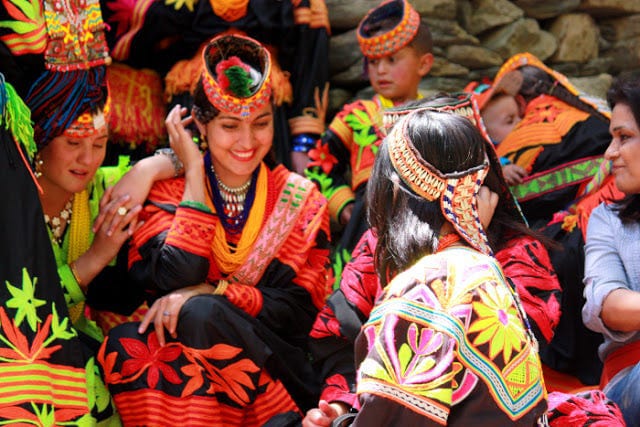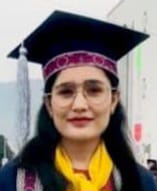
Abstract
Women’s empowerment is a process that develops self-reliance in women and allows them to achieve their potential and strength in all aspects of life. And Women empowerment refers to their ability to break free from male dominance and claim equality with males on social, economic, and political levels (Kumar and Rani 2001). Women’s empowerment is a process whereby women are empowered to organize themselves to strengthen their self-reliance and assert their independent rights to choose and control resources that help challenge their own set of subordination and eliminate (Varghese, 2011)
The present study aimed to explore the myths and reality of women’s empowerment in Chitral. The study was qualitative in nature because qualitative research is more reliable to explore things in-depth. This research was conducted in the rural and urban areas of lower Chitral. In order to acquire data in-depth interviews were conducted with the respondents. A total of 15 women were selected for interviews by using the purposive sampling technique because the research was aimed to acquire the data only from those women who represent the whole universe. Thematic analysis was applied to the responses to extract their themes out if them. By using the thematic analysis, status of Women Decisions making, Participation, freedom of Mobility were extracted as major themes.
The empowerment of women can be defined as the capacity of women to handle various responsibilities and overcome obstacles. Despite the significant progress made by women in terms of employment and education (Akhtar, 1992). Women’s empowerment involves the improvement of their status in the family. Society and community (Vijayanthi, 2002). It ensures that women have access to modern development facilities and increases their participation in the social, economic, and political decision-making processes. (Qadri & Umer, 2015). Women have enormous power over a country’s economy. Women are the architects and shapers of a country’s future(Syed 2020). Women seem to be the most important member of the community so without women society would be incomplete (Sayeh, 1995). Women make up 49 percent of Pakistan’s population and the country cannot advance socially, economically, or politically without them (Sadaquat, 2011).
Women’s status and conditions in Pakistan are significantly better than in other Muslim and South Asian countries (ul Haq et al., 2017). In Pakistan, cultural norms prevent women from using their constitutional and religious liberties, which are guaranteed by both the legislation & Religion(Shouket & Ahmad2020). Pakistan is a Muslim majority country. However, in the case of women’s rights, it is interpreted through conventions and cultural norms (Ibrahim, 2005).
Islam provides women with not just basic rights but also provide equality for women. She is free to purchase resell, work, and complete control over own wealth and assets (Sulaimani, 1986). In Islam, a woman’s legal personality is separate from her father, spouse, or sibling, and she is responsible for her obligations. Women were also given the right to inherit both moveable and immovable property under Islam (Omar, 2011).
Over the previous three decades, the position of women in Chitral has dramatically improved allowing them to participate in all aspects of society including education, health service delivery, politics, and sports. Women in Chitral were demonstrating their worth in many spheres of life and making major contributions to raising the living standards of their families. That the position of women in Chitral is not as limited as it was until the 1980s. When enrolment in schools and treatment in hospitals were considered taboo. In the 1970s it was unthinkable for females to be accepted to schools but now the situation has changed 100% of girls are enrolled in school. Now the Chitral women has up rise to the upper chamber of parliament joined the central superior services established herself as an independent business, obtained Ph.D. degrees from international colleges, and established herself as a world-class athlete (Gul, 2004).
1.3 Significance of the Study
According to gender equality theory which was presented by Sara Long we, in 1990. Women’s empowerment simply means allowing women to take part equally as men in every work of live like men counterpart. And in addition to participating in the development process to achieve or gain control of the factors of production like men in all the societies. The theory aims to ensure equal opportunities to all genders to accomplish gender fairness.
In the current situation, the topic of women’s empowerment becomes a major concern around the world. The focus of the research was on the myths and realities of women’s empowerment in Chitral. Many researchers in Chitral have worked on women empowerment some researchers have explored that women of Chitral are less powerful women are not given basic rights in Chitral. Women are considered subordinate but some researcher says that women of Chitral have been empowered now and now women are given their basic rights. So, in my research, the researcher tried to find out whether the women of Chitral have really been empowered or whether the women there are still considered subordinate by conducting qualitative research. The study intends to explore the milled realities and myths connected to female equality in the study area by engaging women through in-depth interviews to explore the phenomenon meticulously.
Methods
Procures of the study
The present study followed a qualitative primary research design by using the survey method. . Purposive sample techniques were used while conducting this study. Data was collected through in-depth interviews. As a tool of data, the collection interview schedule was considered to be very useful for a reliable response rate for the collection of data.
The study was conducted in rural and urban areas of chital women. The population of this study was employed and housewife women of lower Chitral. These were doctors, nurses, students, housewives, police, teachers, etc. The sample size was 15 among which 10 respondents belong to rural areas and the remaining was the urban area of lower Chitral. researcher select 15 respondents because at situation repetition of answer then the researcher stopped conducting further interviews after a detail discussion with research supervisor
The procedure used to analyze data was thematic analysis.
Data collection
Data was collected through in-depth interviews with the help of interview guide including research questions such as: As a Chitrali woman can you tell me what the entitled rights are for women in Chitral? To what extent you are free to go out for work, market, attend ceremonies, etc.? How do people treat you if you travel alone? How decisions are made in your home related to buying or purchasing things, vote casting, and children’s education? How do you participate in different social, political, and cultural activities in society? How education can empower a woman in your opinion?
Data analysis
Thematic Analysis is used to organize and analyze the collected data. In the field of qualitative research, thematic analysis is one of the most commonly used methods of data analysis. Thematic analysis is carried out by coding the collected data in six different processes in order to generate sub-themes and themes. Themes are identified via coding. Each of the six phases is essential and must be completed in order; each step builds on the one before it. Virginia Braun and Victoria Clarke were the first to apply thematic analysis (2006).
1)Familiarization with the data (Transcription of Data)
The collected data was first transcribed into written form because the data was gathered through a face-to-face interview using the interview guide. This phase also included reviewing and re-reading all of the transcribed data.
2)Generating Initial Codes
At this point, codes were being generated. Dataset codes were created based on all of the relevant qualities, with their relevance to the research issue in consideration. The full dataset was analyzed and coded. All pertinent codes were saved for future use. Steps of data analysis by removing the ones that aren’t needed.
3)Generating Themes
The extracted codes were evaluated during this phase, which was significant. Major, important, and broader sub-themes and themes were generated based on these codes.
4) Reviewing Themes
Themes were checked for validity and correct application during this process. The data were analyzed to see if they answered the study question and if they were relevant to the created codes. Furthermore, proposed theories were evaluated in terms of how well they supported the refined themes. A few adjustments were made.
5) Defining and Naming Themes
This step is critical because the final naming of themes occurred at this stage. Themes were identified and given names. Each theme’s scope and concentration were taken into account.
6) Producing the Final Report
The final stage came after defining and reviewing the topics. This stage required tying the analytical story together. After analyzing all of the data with respect to the existing literature, the final report was created.
Results
The characteristics and demographic descriptions of the respondents are presented in Table 1. Almost all the respondents in the sample size belong to the age group 20-40 years except a few one. The minimum age was 20 years and the maximum was 40 years. The minimum was employed only two respondents were housewives and three of them are students. The majority of the respondents were not married and living with their parents only a few women were married and 2 of them are widows all of them belong to the rural and urban areas of lower Chitral. Participant’s characteristics:
Table 4.1 participation
|
||||||||
| 1 | 20 | Married | F | Teacher | Urban | MSc | ||
| 2
|
30 | Married | F | Nurse | Rural | BScN | ||
| 3 | 22 | Unmarried | F | Student | Rural | BS | ||
| 4 | 35 | Widow | F | Politian | Urban | MSc | ||
| 5 | 23 | Divorce | F | Student | Urban | BS | ||
| 6 | 35 | Married | F | Doctor | Rural | MBBS | ||
| 7 | 36 | Married | F | SHO | Urban | MSc | ||
| 8 | 45 | Married | F | Housewife | Rural | N/A | ||
| 9 | 30 | Married | F | Teacher | Rural | MSc | ||
| 10 | 20 | Unmarried | F | Student | Urban | BS | ||
| 11 | 21 | Unmarried | F | Student | Rural | BS | ||
| 12 | 25 | Widow | F | Police | Rural | FSc | ||
| 13 | 40 | Unmarried | F | Lecturer | Urban | MPhil | ||
| 14 | 29 | Married | F | Lecturer | Rural | MSc | ||
|
|
|
|||||||
4.2 Thematic analysis of the data base
The themes and sub-themes extracted while applying thematic analysis are presented in the following table.
Table 4.2 themes and subthemes emerged during the data analysis
| Themes Sub-themes Codes |
| Status of Women’s | Rights,
Respect Security |
Freedom of mobility
Women’s safety, people’s behavior, family and society support
|
| Decisions making | Family affairs
Public affairs Professional affairs |
Education, job, independence, empowerment, |
| Participation | Sports
Social activities Events gathering
|
Decision making, Equality, participation in politics, cultural activities, |
| Freedom of Mobility
|
Traveling
Jobs recreation Education |
Gender equality, women’s rights, awareness, |
4.3 Status of women: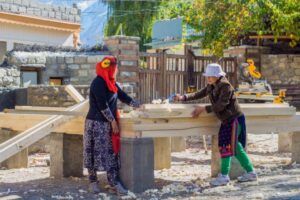
The most important part of this study was to know about the status of women in Chitral. What rights are given to women in Chitral does a woman in Chitral consider herself free or not because Chitral is a developing and backward area there is a lack of opportunities and resources so despite all this, what rights are given to women in Chitral.
4.3.1.1 Rights:
This was the most important theme of this study. what’s rights are given to women in Chitral and are the women of Chitral satisfied with their basic rights and how satisfied and feel free are the women in Chitral. The response of the participant’s women clearly indicates there is more freedom for women in Chitral than ever before. Earlier in Chitral women were deprived of their rights. Because there was no awareness among the people both males and females were uneducated women did not know about their rights and man did not know about respect for women. but now there is a lot of awareness among the people of Chitral.
“In Chitral, if we talk about the current situation women are highly respected, if we compare with the past women are not given so many rights but now in Chitral whether it is social activities or gathering, cultural activities, male and female participate together .in Chitral women are given all kind of freedom and respect. If we talk about the female literacy rate of chital then it is higher than in another district of Khyber Pakhtunkhwa (KP). (p7)
“In Chitral, women are given their rights because if we look at the literacy rate of Chitral the literacy rate of women is very high if a woman is educated then she will be empowered automatically. she will know about the rights she will be able to speak for her rights.” (p2)
“If I talk about earlier women were not allowed to go out of the house without male but now a woman goes out alone. A woman goes to the market alone and also goes to the hospital” (p5)
Women in Chitral were well informed as outlined in the country’s constitution, and they were motivated to oppose injustice and mistreatment. Then, Chitral was second to none in the province in terms of women’s consciousness, with independent groups ranging from giving self-employment opportunities to providing free legal help to troubled women, in addition to playing an important role in the system of governance.
4.3.1.2Respect:
Women Deserve More Respect Femininity is the quality of being a female, which includes the behaviors and roles that are generally associated with women. In the 1960s and earlier, mothers usually stayed home, did the household chores such as laundry, cooking, cleaning, as well as taking care of the children. The men would go to work then return home after a long day and expect dinner ready and then relax. Within families, in many generations, women taught their daughters to do the same to be the “good wife” society expects each woman to be. Over the years, the norms of both men and women have changed as far as it now being acceptable for women to work, in addition to all the family and household responsibilities she has, but also men helping more around the house and playing more of the role when caring for the children. However, although women have come a long way from before.
According to the respondent, Chitral is a society where women are given their basic rights as well as respect, and especially the women who do the jobs get more respect because in Chitral when a single woman goes out of the house, she is given more respect.
“I have been given complete freedom in Chitral I’m a widow I do all my work I have to make every decision of my house and get a lot of respect, love, and support from the people in Chitral. People are very nice to me in Chitral women’s participation is very highly valued and appreciated.” (p4)
“I consider myself an independent woman because I take care of my own needs. And also support my family. I have a lady’s shopping center in lower Chitral. my husband works out of the city I and my mother-in-law live alone at home we two women live alone but we have never had any problem we do everything our self whether we go to the hospital or go to market we do it ourselves I feel very comfortable, secure, and independent in Chitral” (p2)
“I think Chitral is the most secure place for women. women here don’t have any kind of insecurity. I have worked in different cities of Pakistan as a nurse. The security I felt in Chitral is unmatched in any other city because in Chitral women are given too much respect” (p1)
“When we were young there were many restrictions for girls in Chitral. We do not go out of the house alone even some girls were banned from going to school. But now the mindset of people changed a lot. People are giving importance to the education of daughter and girls feel very safe and comfortable” (p9)
Respondents’ response shows that women are given more respect in Chitral. And Chitral is an educated and civilized society the people here are very sincere and love each other and people here do not judge each other on the basis of gender, caste, race and religion they respect each other very much.
4.4 Decision making:
Participation of women in decision-making is not only a right but also a requirement for long-term growth. In a society, it is essential that all segments of the population are represented fairly. Men and women working together to make decisions broadens viewpoints, enhances creativity and invention, expands the best talents and competencies, decreases conflicts, and enhances the decision-making process. Women’s engagement in decision-making has a wide range of benefits, not only for women but for society as a whole.
4.4.1.1 Family affairs:
The majority’s response was the same. According to the respondents, they are involved in every decision made in their homes. Before making any decision at home, whether it is a household decision or not, their parents and other family members must discuss them.
“Being an elder daughter of the Chitral family my opinion in every situation carries equal importance as other family members either it’s about the marriage decision of my sibling or other massive family decisions is always a question to elaborate on my decision or opinion”. (12)
“We have always free hands in decision making or buying anything or decision related to children’s education or decision related to the marriage of children or decisions related to voting casting for anything. So, we can decide everything easily we don’t have any problem in decision making.” (p3)
According to one respondent earlier in Chitral women did not have the right to participate in any household decision because every decision of the house was taken by the man. even in the daughter marriage there was not ask about their opinion. but now there are more changes than before in Chitrali society women now makes her own decision.
“If I talk before my marriage then my parents would make every decision on their own, they would never take any opinion from us .my marriage also took place at the choice of my parents. but now there are many changes in Chitral every single parent asks theirs about every decision.” (p15)
According to the respondents there have been many changes in Chitral compared to before. Earlier all the decision of the house were taken by the elders, but now parents must consult their children and wife before taking any decision.
“I think every girl in Chitral is asked for her consent. There is no concept of child marriages or forced marriages in Chitral in earlier times it may have been a concept but now the people of Chitral have become literate and they know how to respect women’s rights” (p1)
Women participation in every decision of the house is very important because the women know more about domestic matters. according to this study majority of women in Chitral participate in decision making and the opinion they give are also important .the response of the majority was that they make their own decision and there are no restrictions on them.
4.4.1.2 Public affairs:
Women’s participation is very important in any society. A society will flourish only when men and women participate equally.
Previously, only men were allowed to engage in public activities; women were rarely allowed to leave the house, and the majority of their work was done in the privacy of their homes. With the addition of schooling, healthcare, and rural assistance programs to the region, it has become much more acceptable for women to engage in some public spaces. 2005a (Pardhan)
“I am a police officer by profession, my participation is very important in public” (p4)
“The participation of women in public affairs will be much higher than before.in our time we were not allowed to go in public, but now our daughters and sisters go to public alone and participate and their opinion is also asked in public affairs” (p5)
According to respondents there have been many changes in Chitral compare to before. Earlier it was not considered good for women to go out of their homes. But now society itself encourages women to participate in public.
4.5 Participation
According to one participant, women’s roles in Chitral are not as limited as they were in the 1980s when enrolment in schools and hospital care were regarded taboo. While society is still male-dominated, she claims that the overall attitude toward women is receptive and supportive and that there is no barrier to her developing her individuality and expressing herself in any profession, including games. Women’s standing in Chitral has risen dramatically in the previous three decades, allowing them to participate in all aspects of society, especially schooling, healthcare, provision of services, politics, and sports.
4.5.1.1 Social activities:
Everybody knows that Chitral is a backward and less developed area where there is a dearth of opportunities. but despite this, there is full participation of women in social activities.
“We mostly participate in social gatherings, social entrepreneurship, or any small desk social activities. We also participate in political, cultural, and economic activities in Chitral.” (p2)
“Yes, there are social and cultural activities in our university in which we girls and boys participate equally.” (p7)
“Yes, I participate in all the political or social activities in Chitral. I am in politics therefore my participation is more in these activities. If there are any activities related to politics, I participate in them very actively.” (p15)
According to the respondent’s earlier participation of women in chitral was very less. Women were not given the opportunity to participate in events. But now women’s participate very actively in every events.
“By profession, I am a photographer so I participate in various events as a photographer.” (p2)
The mentality of Chitrali become changed the people of Chitral are now very educated. according to the respondent that before women were not allowed to participate in any social, cultural, and political activities. but now there is a big change in Chitrali society.
4.5.1.2 Participation in Events
According to the respondents the participation of women in chitral become much higher than before.
“Of course, I go to a different wedding and family gatherings there is no restriction for me.” (p2)
“I am an event organizer and I am specially invited to all the weddings that happen in my village.so I go to every events and decorate the house according to the events” (p9)
“According to respondent earlier the participation of women in chitral was very less. Women only went to such events where there were no males but now there are many changes in chitrali society and now women’s participates in all kinds of events” (p7)
“I fully participate in activities in my society I attempt every social gathering, and family gathering. being a social and political worker, I participate in various political activities.” (p15)
Respondent’s response indicates that they are allowed to attend many events like cultural events, marriage ceremony, and vote casting etc. and one respondent mention earlier the participation of women in chitral was very less. Women only went to such events where there were no males but now there are many changes in chitrali society and now women’s participates in all kinds of events.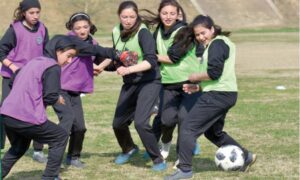
4.5.1.3 Sports
The participation of Chitrali women in sports is very low again the same issue because Chitral is a less developed area and there is a lack of opportunities and facilities in Chitral and there are no sports grounds and any other sports facilities for women.
“I am a player on the Karim Abad football team I have complete freedom to play football it’s not considered bad for girls to play football in the society in which I live. But in some other villages of Chitral, it is not considered well for girls to go for sports.” (p2)
“I’m a player of Karim Abad football team our society did not support us at all before but now it does “(p8)
“My daughter plays in Pakistan football team. I think girls should have passion opportunities come out on their own.” (p12)
According to the study it matters society to society. according to respondent she is a player of football team and society also support him but she says women participation in sports is not consider good in other villages of chitral.
4.6 Freedom of mobility:
Years ago, a single woman could not leave her hamlet without a male family member, who was also covered from head to toe. The narrow-mindedness towards women has vanished from society, allowing her increased mobility. She may now travel from one location to another on her own for various objectives. What’s more encouraging is that society has shown them dignity and a sense of safety.
4.6.1.1Traveling:
In Chitral, women have freedom there is no societal pressure for women in Chitral because the society of Chitral gives more respect and support to women .according to one respondent that there is no restriction on women in Chitral but due to lack of facilities most of the women do not travel alone.
“being a chitrali I consider myself an empowered woman .my society has never deprived me of any rights but my family has set some boundaries for me like I can’t go out of the house alone I always go out with my brothers and without a burqa (veil) I’m not allowed to visit any public places but I have never felt bound in this boundaries I think this boundary is for my safety.” (p9)
“I’m a student of Chitral University I live in a hostel I go to the market alone to get my necessities and go to the bank alone to collect my fees. I never have a problem. people in the community treat me very well I always felt very secure” (p4)
“I feel safe when I go out alone the people of Chitral have great respect for women I often go out with my brother but whenever I go out alone, I have no problem I feel very safe and secure. In my area most of the women are wearing burqa (Veil).in my opinion veil and empowerment are two different things the veil is worn by a woman for her own satisfaction because she is comfortable in the veil .so a woman can be empowered even by wearing Vail.” (p6)
“When I was studying in Islamabad, I used to travel from Chitral to Islamabad mostly. my parents become so worried when I was traveling alone during travel my father would call me every half hour and ask how the journey was going so every parent cares about their children no matter how old they are but during my journey, I felt very safe people were very nice to me they respected me and cared me a lot.” (p13)
“Mostly the women in Chitral do not travel alone so this does not mean that there is any restriction for women in Chitral but the main reason is this Chitral is a less developed region there is a lack of facilities taxis are not as easy to find there as in cities that why women don’t mostly travel alone. other than that, there is no restriction on women in Chitral if a women travel alone people give them respect and feel safe.” (p1)
According to the respondents, there is no restriction on a single woman traveling in Chitral when a woman travels alone, they are given extra respect.
The response of the majority was the same. According to the respondents’ women’s are free in chitral. In chitral it’s not consider bad for a women to go out of the house alone .according to one respondents when a women travel alone people consider her as their responsibility and take full care of her.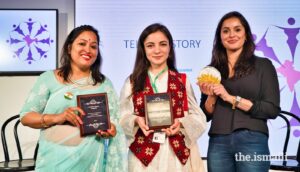
4.6.1.2 Jobs /Academia
Women’s job in Chitral has highly appreciated society respect these women very much and give them more respect.
“There is no restriction for women in Chitral I work in DHQ hospital Chitral. I don’t have any problem here .my house is far away from the hospital. It takes 20 minutes to get from my house to the hospital .some time my duty is at night so I go to the hospital alone I never had a problem going alone to the hospital.”(p15)
“Sometimes we even go to the fieldwork from the hospital because in different villages within Chitral there is a free medical camp every year so we go to this camp with our team .so some time we have to stay there so I don’t have any problem my family supports me a lot and people in the society also give us a lot of respect.”(p4)
“The society of Chitral is well educated and honorable in such a society a female can easily do her job in every department and everyone treats her very well respect is always given to women by the society and working women are admired by everyone.”(p14)
“Being the eldest daughter of my family I have a lot of responsibilities .I work and supports my family.”(p8)
There is no restriction on women in chitral .they can do any job they want .according to one respondents there is no restriction by the society but the society itself appreciates the job of a women’s. Now there are so much changes in the society of chitral that every parents wants their daughter to study and work like the daughters of others.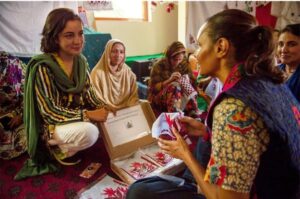
4.6.1.3 Education:
According to respondents women’s education is highly valued in Chitral. And educated women are given much importance in society.
“I’m a doctor by profession and I consider myself independent and empower I am highly respected in my society. Women’s education is highly valued in Chitral when I come to Chitral for the first time after completing my MBBS degree the people of my village give me a warm welcome .they people of my village greeted me with flowers my relatives came to my house to congratulate my parents.”(p4)
“Yes, education is very important for a woman to become empowered because when a woman is educated she becomes more empowered and dominant in home and society also.”(p2)
According to respondents education is essential for women’s empowerment because when a woman is educated she is automatically empowered she knows about her rights and she can speak up for her rights.
“I think education is very important for women to be empowered I always thank Allah almighty that I am an educated woman because if I was not educated how would I raise my children after the death of my husband how would I complete my household expenses so it’s very important for women to be educated.” (p15)
“Education is the force that never lets women down .an educated woman becomes fearless and independent and earns herself she does not depend on anyone so I think education is very important for women to be empowered.”(p14)
According to one respondent to be empowered a woman needs skills, not education.
“Education is essential for every man and woman but we can’t say that uneducated women cannot be empowered .beings empowered means that women can make their own decision, speak up for their rights, in the society and earn through their skills, so we can see all these qualities even in uneducated women in our society .so according to my opinion education is not necessary for women empowerment.”(p7)
“Yes, education is essential for women to be empowered if a woman is educated then she comes to power automatically but illiterate women can also be empowered .my mother is an uneducated woman but my mother makes all the decisions in my house whether it is related to our education or something else.”(p12)
“Of course, education is the key to success so education empowers women .when we educate a girl then we educate the whole nation .so education is a necessity for every woman.”(p6)
According to the study education is important for a women to be empowered because when a women is educated she raises her voice for her rights but some respondents also says that women’s need skills not education to be empowered.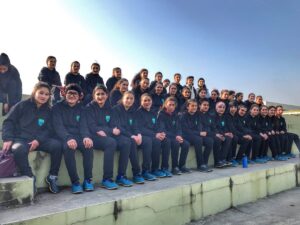
DISCUSSION
This chapter includes a major discussion of the results and the researcher constructed .The conclusion of the study on the basis of qualitative analysis and results of the obtained dataset. At the end of this chapter, recommendations are also provided
The present study has highlighted women’s empowerment in Chitral. So the empowerment of women is very important for the development of society a society can only be empowered when men and women work together and make decisions together.
Women’s empowerment means achieving social and economic independence for women. It is a process wherein women make their own decisions on their own. Whenever women have the power to choose, they feel more empowered and valuable. Women’s empowerment also involves offering proper education to a girl kid (Mosedale 2005).
Working women and women who work in low-wage jobs can also benefit from education. Women empowerment includes no discrimination against women and equal opportunity in the workplace. Women’s empowerment entails equal pay for men and women in the workplace. It relates to women’s social advancement through education (Kabeer 2005).
The issues related to the empowerment of women are not only limited to Chitral or Pakistan but are witnessed across the globe, as some of the traditional societies have a high trajectory of women empowerment and need to focus more on their socio-cultural practices to gain higher attention to be known as womanly empowered states.
According to the literature women are not empowered in Chitral and women are not given their basic rights in Chitral and boundaries have been set for women in Chitral and women can’t go out of the house alone and women are considered subordinate and women are not allowed to participate in any decision making.
This study is different from other studies because it’s specifically relying on the myths and reality of women empowerment.it talks about whether women are empowered in Chitral or not because according to various researchers’ women of Chitral are not empowered. but according to this research women of Chitral are empowered now the people of Chitral to be educated and know about women’s rights there are more changes in Chitral then before.
While conducting this study the required data was collected from the women of rural and urban areas of lower Chitral. When women were asked, what rights are given to them in Chitral and how much empower they consider themselves now. They expressed almost similar responses except few ones and the answer of the few respondents was that the restriction is from their family not by society and they think that restrictions are for safety. Moreover, they narrated that Chitral is a less developed area and there is lack of opportunities for both male and females. the higher education for girls there is a dearth of universities in Chitral it’s very difficult for the female to go down district to studies and there is not easily transport is available for female so all this is due to less development and lack of resources otherwise there is no restriction and pressure from the society. Society is very supportive of women despite their limited resources.
The Chitrali people are all Muslim Except the approximately 3,000 Kalash that make up Chitrali non-Muslim community (Hilton, 2009). The majority of population is Sunni and the remaining 30% are Ismailia Muslim. The residents of southern Chitral and Chitral Town are mostly Sunni Muslims. In comparison to other cities or rural regions in Pakistan, the Ismail’s make up the majority in northern Chitral. These Aga Khan following northern Chitrali Ismailia Muslims place a great priority on both women’s and men’s education and they educate both genders as long as it is financially feasible (Liljegren, 2002).
Aga Khan is Ismail’s 49th spiritual leader having assumed the title of Imam in 1957. He founded the Aga Khan Development Network to help vulnerable populations across the world, particularly in places where the government is unable to meet their needs. In previous times of hunger Ismail speak lovingly of the Aga Khan as their rescuer and follow his direction, (Antonia C. Settle, 2012). Over the last three decades, with the help of the Aga Khan Development Network the female literacy rate and women empowerment in Chitral particularly in northern Chitral have increased significantly. Despite this beneficial development, however, there is an evident critique to be made of the neoliberal and neocolonial ideas at work (Antonia C Settle, 2012).
Men are very vulnerable they are not as mentally strong as women. As a result, women have been more tolerant and willing to make sacrifices than men. So it doesn’t matter if society has empowered them or not because they have always been enabled in their psyches even if their bodies aren’t empowered their souls have always been (Das, 2012).
While the participation of women in the paid labor market and enrolment in education has increased significantly in recent years. But gender gaps still exist in practically all nations around the world (Biswas & Soni, 2015).
Female literacy rates have been improved in recent times in Chitral as a result of shifting demographic realities driven by exposure to the outside world (Pardhan,1995). This has shifted women’s expectations, and they are keen to seek formal employment for the first time in their life. As a result, new job opportunities are opening up, and established gender roles appear to be shifting with time. As a result, the public space for women appears to be expanding as more women enter the workforce and volunteer in roles that require them to work alongside males. Despite the incorporation of a tiny minority of women, there has been no discernible change in the power structure (Ali & Ali, 2015).
Women’s status and position in society are enhanced as a result of education, which provides them with space and opportunities to participate in the social and development sectors. Education for women is important to a country’s social stability and development. Women’s empowerment is seen as a key component of higher education. The experience and knowledge gained through higher education will help in the transformation of society toward progress and security (Ademe & Singh, 2015).Women seem to be the most important member of the community so without women society would be incomplete (Sayeh, 1995).
Women on the other side have always had second-class status in society due to the nature of societies. Also, it is true that now in today’s world women are increasingly becoming part of the development work for communities and are viewed as their founders. There is a need to put a special emphasis on providing sociocultural, democratic, and institutional opportunities for women to empower themselves and advance for society to prosper (Montagu 1999).
Empowerment is a process through which one gains the ability to get something, and it is a major aspect in defining the position and rights of women in societies. The empowerment processor as we might call it a process that allows individuals to gain authority over public decision-making and their personal lives (Mandal, 2013).
5. Summary:
If we talk about women’s rights in Chitral there are many changes arising in Chitral society and there is a lot of awareness among men too. Women are educated now and they raised their voices for their rights society also gives more importance to women’s rights. So according to this research the researcher highlight the myths and reality of women’s empowerment in Chitral. Status of women, women participation, decision making, and freedom of mobility were the main themes of this research extracted from the response of the Chitrali women The main concern of the respondent women were women’s rights and their respect in Chitrali society .according to the respondent women’s are given their basic rights and respect in Chitral there is no doubt that Chitral is a less developed area but the society has not deprived the women for their basic rights.
The first theme of this research was the status of women which was based on rights, respect family support, and public behavior toward women .the respondents pointed out that for women to be empowered she needs the support of the society as much as the support of the family .women cannot be empowered unless society respect women’s rights .through this study women shared their experience that they are given enough rights in Chitral and there is no pressure from the society and they feel much more secure in their society.
The second theme of the study was the participation of women in chital which was based on sports, social activities and events gathering .study has shown that women in Chitral participate in all political, cultural and social activities but in a limited amount .because Chitral is a less developed area there is lack of opportunities, so women do not participate much in a sport otherwise there is no restriction by the society
The third them of the study was the participation of women in the decision making which was based on participating in domestic decisions and personal decisions or taking part in any public decisions
The fourth major theme was freedom of mobility which was based on traveling and recreation activities .study has pointed out that Chitral is a safe place for women if a woman goes out of the house alone she fell very secure and comfortable and the social behavior toward women is very good.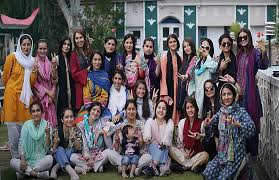
5.1 Conclusion:
It has been concluded that now Chitrali women are empowered enough as compared to the old times. The mindset of people was changed as time progressed .in older times society did not prefer women’s rights and education women were deprived of their rights .because there was no awareness among the people both males and females were uneducated women did not know about their rights and man did not know about respect for women .but now there is a lot of awareness among the people of Chitral now this perception is changed. And women are given full rights and this right is not only given to women by their families but the entire society takes care of women’s rights.as women get more education, are empowered, and are well aware of the current social system and its requirement.
According to one participant, women’s roles in Chitral are not as limited as they were in the 1980s when enrolment in schools and hospital care were regarded taboo. While society is still male-dominated, she claims that the overall attitude toward women is receptive and supportive and that there is no barrier to her developing her individuality and expressing herself in any profession, including games. Women’s standing in Chitral has risen dramatically in the previous three decades, allowing them to participate in all aspects of society, especially schooling, healthcare, provision of services, politics, and sports.
If we sum up the whole discussion we can say that women are given complete rights in Chitral the women of Chitral are more independent than they were previously .although Chitral is a backward region with few prospects for women but women are not deprived of their basic rights. Women in Chitral face some restrictions, but they believe that these restrictions are necessary for their safety.
REFERENCES
Abbas, A., & Muneer, L. (2019). Women Empowerment in South Asia: Role of Women in Development of Pakistan. International l Journal of Research in Humanities and Social Studies, 6(2), 42-49.
Abdin, M. (2008). Women Empowerment in Bangladesh. Women Empowerment in Bangladesh (May 8, 2008).
Abolhassani, N. (2000). The Rights of Women in Islam: An authentic approach. Journal of Gender Studies, 9(1), 101.
Acharya, D. R., Bell, J. S., Simkhada, P., Van Teijlingen, E. R., & Regmi, P. R. (2010). Women’s autonomy in household decision-making: a demographic study in Nepal. Reproductive health, 7(1), 1-12.
Acharya, M., & Bennett, L. (1983). Women and the subsistence sector: economic participation and household decision making in Nepal.
Adeel, G. H. (2010). Status of women in Islam: A critical analysis on a matter of equality. Message of Thaqalayn, 11(1), 101-114.
Ademe, G., & Singh, M. (2015). Factors affecting women’s participation in leadership and management in selected public higher education institutions in Amhara Region, Ethiopia. European Journal of Business and Management, 7(31), 18-29.
Adhikari, R. (2015). Effect of women’s role on household decision making on institutional delivery of the recent child in Nepal. Journal of Management and Development Studies, 26, 51-61.
Aggarwal, V. B. (2002). Media and society: challenges and opportunities. Concept Publishing Company.
Akhter, N., & Naheed, F. (2014). Perceptions of Educated women about the role of media in women empowerment. European Scientific Journal, 10(31).
Ali, R., & Ali, M. (2015). Education and Women’S Empowerment in Northern Pakistan: Tracing Accomplishments and Predicaments. Research of Humanities and Social Services, 12.
Ali, W., Fani, M. I., Afzal, S., & Yasin, G. (2010). Cultural barriers in women empowerment: a sociological analysis of Multan, Pakistan. European Journal of Social Sciences, 18(1), 147-155.
Amir, N. (2015). Microfinance and women empowerment: a case study of chitral region. Journal of Economics and Sustainable Development, 6(9), 308-312.
Ashraf, S., Abrar-ul-Haq, M., & Ashraf, S. (2017). Domestic violence against women: Empirical evidence from Pakistan. Pertanika Journal of Social Sciences & Humanities, 25(3), 1401-1418.
Asif, M. (2013). Role of Media in Women Empowerment. Brighton: Institute of Development Studies at the University of Sussex.
Bahl, M. (2007). Voilence [ie Violence] on Women by Men. Cyber Tech Publications.
Bari, F., & Khattak, S. G. (2001). Power configurations in public and private arenas: the women’s movement response. Power and Civil Society in Pakistan, 217.
Bhattacharya, S. (2014). Status of women in Pakistan. Journal of the Research Society of Pakistan, 51(1).
Biswas, A., & Soni, C. (2015). Empowerment of Women in India: A reality or a Myth. Journal for Studies in Management and Planning, 1(4), 260-273.
Bushra, A., & Wajiha, N. (2015). Assessing the socio-economic determinants of women empowerment in Pakistan. Procedia-Social and Behavioral Sciences, 177, 3-8.
Chuki, S., & Turner, M. (2017). Women and politics in democratic transitions: the case of Bhutan. Contemporary South Asia, 25(2), 136-152.
Das, S. K. (2012). An analysis of constraints in women empowerment in Tribal area: Evidences from Assam. Asian Journal of Research in Social Sciences and Humanities, 2(4), 61-74.
Duflo, E. (2012). Women empowerment and economic development. Journal of Economic literature, 50(4), 1051-1079.
El-Solh, C. F., & Mabro, J. (2020). Introduction: Islam and Muslim Women. In Muslim women’s Choices (pp. 1-32). Routledge.
Ember, C. R. (1983). The relative decline in women’s contribution to agriculture with intensification. American Anthropologist, 85(2), 285-304.
Engineer, A. A. (2011). Rights of women and Muslim societies. Socio-Legal Rev., 7, 44.
Farooq, M., Zaman, A., Mirza, F. I., & Anwar, H. N. (2016). Predicament of the Women Empowerment in Punjab, Pakistan. Pakistan Journal of Social Sciences (PJSS), 36(2).
Gram, L., Morrison, J., & Skordis-Worrall, J. (2019). Organising concepts of ‘women’s empowerment’for measurement: a typology. Social Indicators Research, 143(3), 1349-1376.
Haeri, S. (2002). No shame for the sun: Lives of professional Pakistani women. Syracuse University Press.
Hashemi, S. M., Schuler, S. R., & Riley, A. P. (1996). Rural credit programs and women’s empowerment in Bangladesh. World development, 24(4), 635-653.
Hazarika, D. (2011). Women empowerment in India: A brief discussion. International Journal of Educational Planning & Administration, 1(3), 199-202.
Hennink, M., Kiiti, N., Pillinger, M., & Jayakaran, R. (2012). Defining empowerment: perspectives from international development organisations. Development in Practice, 22(2), 202-215.
Hilton, J. (2009). The fate of the Kalasha. Global Post.
Holt, M., & Jawad, H. A. (2013). Women, Islam, and resistance in the Arab world. Lynne Rienner Publishers London.
Ibrahim, F. (2005). Honour killings under the rule of law in Pakistan.
Inglehart, R., Norris, P., & Ronald, I. (2003). Rising tide: Gender equality and cultural change around the world. Cambridge University Press.
Jawad, H. A. (1998). The legal status of women in Islam. In The Rights of Women in Islam (pp. 1-15). Springer.
Jayalakshmi, N. Role of Media in Women Empowerment. Women and Media.
Kazmi, S. W., & Quran, H. (2005). Role of education in globalization: A case for Pakistan. SAARC journal of human resource development, 1(1), 90-107.
Khan, E. A., & Moin, A. (2013). Women empowerment: Role of new media. Excellence International Journal of Education and Research, 1(3), 206-216.
Khan, S. (2011). Zina, transnational feminism, and the moral regulation of Pakistani women. UBC Press.
Khan, T. U. (2004). Women’s rights in Islam. National Research and Development Foundation.
King, E. M., & Hill, M. A. (1997).
Women’s education in developing countries: Barriers, benefits, and policies. World Bank Publications.
Kumar, K. V., & Rani, S. V. (2001). Empowerment of women-A myth or reality. Social change, 31(3), 42-52.
Mandal, K. C. (2013). Concept and Types of Women Empowerment. International Forum of Teaching & Studies,
Mason, K. O. (1996). Wives’ economic decision-making power in the family in five Asian countries. East-West Center.
Menhas, R., Jabeen, N., Akhtar, S., & Yaqoob, M. (2013). Cultural barriers of female empowerment. Afro Asian Journal of Anthropology and Social Policy, 4(1), 1-10.
Moghadam, V. M. (2007). From Patriarchy to Empowerment: Women’s Participation.
Movements, and Rights in the Middle East, North Africa, and South Asia (NY: Syracuse University Press, 2007).
Nassani, A. A., Aldakhil, A. M., Abro, M. M. Q., Islam, T., & Zaman, K. (2019). The impact of tourism and finance on women empowerment. Journal of Policy Modeling, 41(2), 234-254.
Naz, A., Ashraf, F., & Iqbal, S. (2020). The Relationship between Higher Education and Women Empowerment in Pakistan. UMT Education Review, 3(2), 65-84.
Nevondwe, L., & Odeku, K. O. (2013). Constitutional Right to Education in South Africa: A Myth or a Reality? Mediterranean Journal of Social Sciences, 4(13), 847.
Noureen, G. (2015). Education as a prerequisite to women’s empowerment in Pakistan. Women’s Studies, 44(1), 1-22.
Omar, S. (2011). Women’s right to inheritance: Shariah and Pakistan’s law. Online: web] http://www. Slideshare. Net/shaguftaomar/womensright-to-inheritance-shariah-andpakistans-laws.
Pakistan, I. (2004). Chitral: A Study in Statecraft (1320–1969). Karachi: IUCN Pakistan.
Pardhan, A. (2005). Booni valley women’s perception of schooling: Hopes and barriers. International Education Journal, 6(4), 438.
Pradhan, R., Meinzen-Dick, R., & Theis, S. (2019). Property rights, intersectionality, and women’s empowerment in Nepal. Journal of Rural Studies, 70, 26-35.
Rani, L., & Kumari, R. (2019). Effect of Empowerment on Some Personality Traits. American Journal of Applied Psychology, 8(2), 36.
Self-empowerment, A. orking Papers.
Senarath, U., & Gunawardena, N. S. (2009). Women’s autonomy in decision making for health care in South Asia. Asia Pacific Journal of Public Health, 21(2), 137-143.
Settle, A. C. (2012). The new development paradigm through the lens of the Aga Khan Rural Support Programme: Legitimacy, accountability and the political sphere. Community development journal, 47(3), 386-404.
Shah, S. A. (2012). Gender and building homes in disaster in Sindh, Pakistan. Gender & Development, 20(2), 249-264.
Singh, P., & Gupta, S. (2013). A conceptual study on women empowerment-Facts and realities. IOSR Journal of Humanities and Social Science (IOSR-JHSS), 11(4), 54-63.
Skalli, L. H. (2001). Women and poverty in Morocco: The many faces of social exclusion. Feminist review, 69(1), 73-89.
Sridevi, T. O. (2005). Empowerment of Women-A systematic analysis. India Development Foundation IDF Discussion Paper.
Sulaimani, F. A. A. (1986). The changing position of women in Arabia under Islam during the early seventh century University of Salford.
Taga, A. A. (2012). Gender gap in Pakistan: A sociological analysis. Academic Research International, 2(3), 629.
Tarar, M. G., & Pulla, V. (2014). Patriarchy, gender violence and poverty amongst Pakistani women: A social work inquiry. International Journal of Social Work and Human Services Practice, 2(2), 56-63.
Turnhout, E., Metze, T., Wyborn, C., Klenk, N., & Louder, E. (2020). The politics of co-production: participation, power, and transformation. Current Opinion in Environmental Sustainability, 42, 15-21.
Uddin, I., Khan, A. R., & Ghani, F. (2021). IMPEDIMENTS TO WOMEN HIGHER EDUCATION IN PAKISTAN: A CASE STUDY OF DISTRICT CHITRAL. Pakistan Journal of Educational Research, 4(1).
Uma, S. (2004). New Woman and Mass Media. In: Jaipur: Surabhi Publications.
Varghese, T. (2011). Women empowerment in Oman: A study based on Women Empowerment Index. Far East Journal of Psychology and Business, 2(2), 37-53.
Webster, K., Chen, C., & Beardsley, K. (2019). Conflict, peace, and the evolution of women’s empowerment. International Organization, 73(2), 255-289.
Yazdani, F. (2003). Women’s representation in local government in Pakistan: Impact analysis and future policy implications. Centre for Policies Studies, Central European University.
Buribayev, Y. A. & Z. A. Khamzina (2019). “Gender equality in employment: The experience of Kazakhstan.” International Journal of Discrimination and the Law 19(2): 110-124.
Chisamya, G., et al. (2012). “Gender and education for all: Progress and problems in achieving gender equity.” International journal of educational development 32(6): 743-755.
Gupta, V. K., et al. (2013). “Differences between men and women in opportunity evaluation as a function of gender stereotypes and stereotype activation.” Entrepreneurship Theory and Practice 37(4): 771-788.
Habib, K., et al. (2019). “Impact of education and employment on women empowerment.” European Online Journal of Natural and Social Sciences: Proceedings 8(3 (s)): pp. 62-74.
Htun, M. N. & M. P. Jones (2002). Engendering the right to participate in decision-making: electoral quotas and women’s leadership in Latin America. Gender and the politics of rights and democracy in Latin America, Springer: 32-56.
Huyer, S. (2006). “Understanding gender equality and women’s empowerment in the knowledge society.” Cinderella or cyberella: 15-47.
Kabeer, N. (2005). “Gender equality and women’s empowerment: A critical analysis of the third millennium development goal 1.” Gender & Development 13(1): 13-24.
Kidwai, R. (2001). Domestic violence in Pakistan: The role of patriarchy, gender roles, the culture of honor and objectification/commodification of women, Alliant International University, Los Angeles.
Kumar, K. V. & S. V. Rani (2001). “Empowerment of women-A myth or reality.” Social change 31(3): 42-52.
Mahmud, S., et al. (2012). “Measurement of women’s empowerment in rural Bangladesh.” World development 40(2): 610-619.
Matsumura, M. & B. B. Gubhaju (2001). “Women’s status, household structure and the utilization of maternal health services in Nepal.” Asia-pacific population journal 16(1): 23-44.
McGill, E. “8 Gender equality and women’s empowerment in Asia.”
Moghadam, V. M. (1992). “Patriarchy and the politics of gender in modernising societies: Iran, Pakistan and Afghanistan.” International Sociology 7(1): 35-53.
Montagu, A. (1999). The natural superiority of women, Rowman Altamira.
Mosedale, S. (2005). “Assessing women’s empowerment: towards a conceptual framework.” Journal of international development 17(2): 243-257.
Narayana, A. & T. Ahamad (2016). “Role of media in accelerating women empowerment.” Int. J. Adv. Educ. Res 1: 16-19.
Odera, J. A. & J. Mulusa (2020). “SDGs, gender equality and women’s empowerment: what prospects for delivery.” Sustainable development goals and human rights: 95-118.
Sadaquat, M. B. (2011). “Employment situation of women in Pakistan.” International journal of social economics.
Sarwar, A. & H. Zeng (2021). “Breaking free from patriarchal appropriation of sacred texts: An Islamic feminist critique of Bol.” Asian Journal of Women’s Studies 27(4): 465-487.
Shouket, S. J. & M. S. Ahmad “Islam and Women Parliamentary Representation in Pakistan.”
Syed, B. (2020). Gender and decentralized governance: impact on women’s empowerment through improvement In education sector, Norwegian University of Life Sciences, Ås.
Wei, W., et al. (2021). “Women’s empowerment and their experience to food security in rural Bangladesh.” Sociology of Health & Illness 43(4): 971-994.( The author is student of MS Social Sciences, SZABIST Islamabad, co-author is Irfan Ali and the Supervisor is Dr. Mohammad Abo ul Hassan Rashid)

